Choosing the right plants for your garden and climate isn't always easy. Do you want to plant a citrus tree in your landscape but live in zone six and have no clue where to begin? Is it okay to grow a citrus tree somewhere with warm summers and very chilly winters?
Luckily, we've done some research into this question and have the answer below!
For those wanting to plant citrus in USDA growing zone six, you first need to understand how cold your tree can get. Since zone six has two "subzones," it's good to ensure your citrus can handle weather down to a possible -5 or -10 degrees.
With that said, there are a few citrus varieties that can handle freezing or below-freezing averages with proper protection:
- Satsuma
- Grapefruit
- Lemon (if potted)
- Kumquat
- Tangerine
As we begin this article, we will cover all things growing citrus in zone six and discuss what to do for your tree before the temperatures drop. Whether you're new to a cold region, haven't grown a citrus plant before, or have additional questions, we're here to help. With that said, let's dive right in!
Can Citrus Plants Survive In Zone 6?
![Citrus plants that can survive in zone 6, Cold Hardy Citrus For Zone 6? [5 Suggestions For Your Landscaping]](https://gardentabs.com/wp-content/uploads/2022/11/Citrus-plants-that-can-survive-in-zone-6..png)
Although most citrus trees and plants are better suited for USDA zones nine or higher, in some cases, they can grow in colder regions like zone six.
However, most of the time, you will need to cover your citrus tree when the freezing weather hits, so that's something to remember.
Citrus tend to be less bothered in freezing weather if they're dormant, as fruit-bearing plants can be damaged if they get too chilly during a blooming period.
Zone six is a tricky one, as it is made up of two subzones: 6a and 6b.
In these zones, you can expect cold temperatures to fall under the freezing mark, sometimes hitting -5 or -10 (in 6a) on an extra frigid evening. Subzone 6a is a bit colder than 6b on average.
Therefore, you want to ensure your citrus has protection from the elements. For example, if the forecast calls for the weather near or below zero, try grabbing a thermal sheet for your citrus to cover them.
Although you're only using a sheet: that extra layer can save your citrus in extreme conditions.
Where Is Zone Six In The United States?
USDA zone six begins in the Mid-Atlantic United States (including parts of New York, New Jersey, Pennsylvania, and West Virginia).
From there, it reaches down the Atlantic Coast to include North Carolina, Maryland, and the District of Columbia. In zone six, you can also find sections of Ohio, Kentucky, Kansas, New Mexico, Arizona, Utah, and Nevada.
This is a fairly large section of the USDA zone map, so if your garden gets cold in the winter and hot in the summer, you may be in zone six.
One of the tricky things about growing plants in this zone is that the weather can be extreme on both ends of the spectrum.
For example, if you're in Arizona within zone six, you might have freezing temperatures through the winter, followed by sweltering triple digits in the summertime.
Of course, that will likely only happen a few times, depending on where you are, but it can make finding a citrus plant to grow even more challenging.
However, we do have a few ideas for zone six that we'll share below:
1. Satsuma
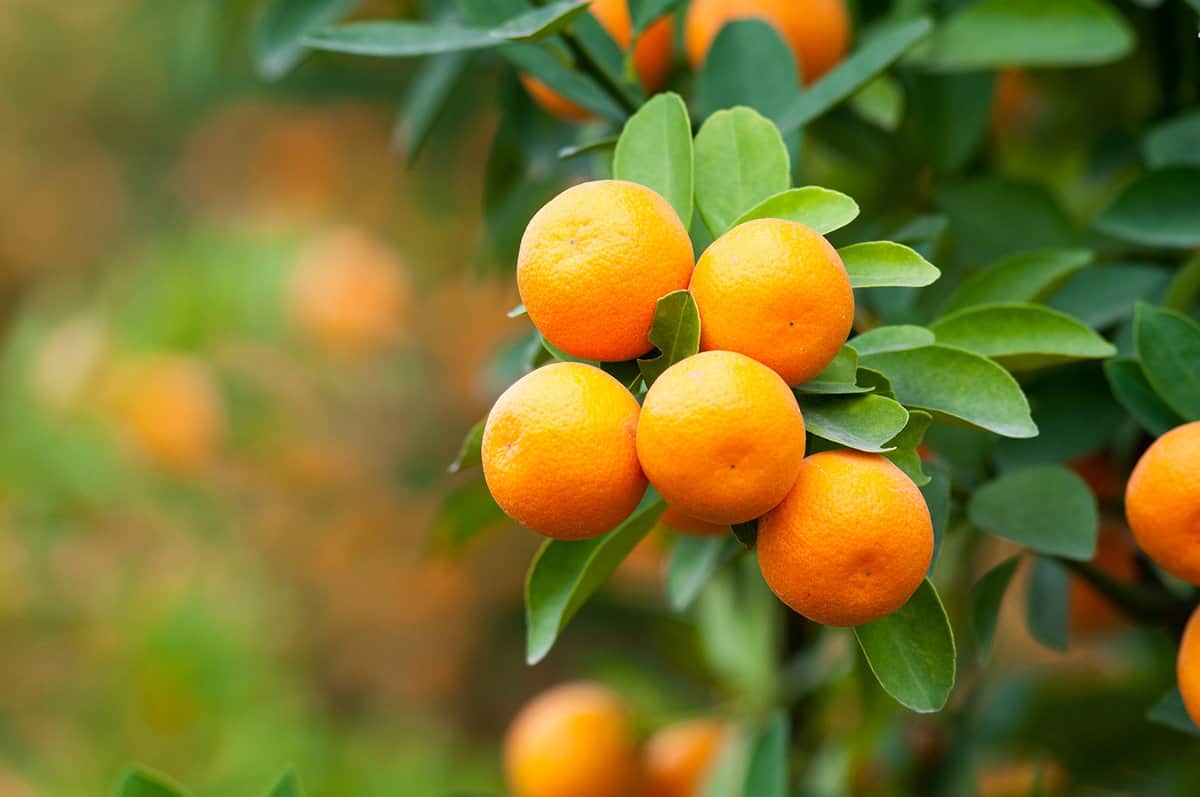
The satsuma is one of the first citrus species we recommend for zone six conditions. Generally, this tree can withstand weather down to nearly 15 degrees Fahrenheit, which is impressive for citrus.
With that said, satsuma, which is younger or trees yet to achieve dormancy, are usually only tolerant to 26 degrees before sustaining damage to their blooms.
Therefore, if you live somewhere within zone six that drops to around or below freezing regularly, we recommend investing in a thermal cover for your tree or keeping it in a pot you can transfer inside.
A common theme with citrus plants is that they can't survive unprotected below-zero conditions. So even if your tree is mature or dormant, you don't want to let citrus sit out in freezing weather unprotected for long.
Is Satsuma The Hardiest Citrus For Cold Weather?
Yes, satsuma citrus plants are one of the hardier options among this species.
Since your satsuma will be okay down to nearly 15 degrees unprotected, that is incredibly impressive for a generally warm-weather-loving fruit species.
One other cold-hardy citrus that shares a 15-degree threshold with satsuma is a kumquat, so these two are our top picks for the zone six regions.
Many experts consider satsuma the most cold-hardy citrus grown by commercial growers in the US, so this variety holds an impressive title.
2. Grapefruit
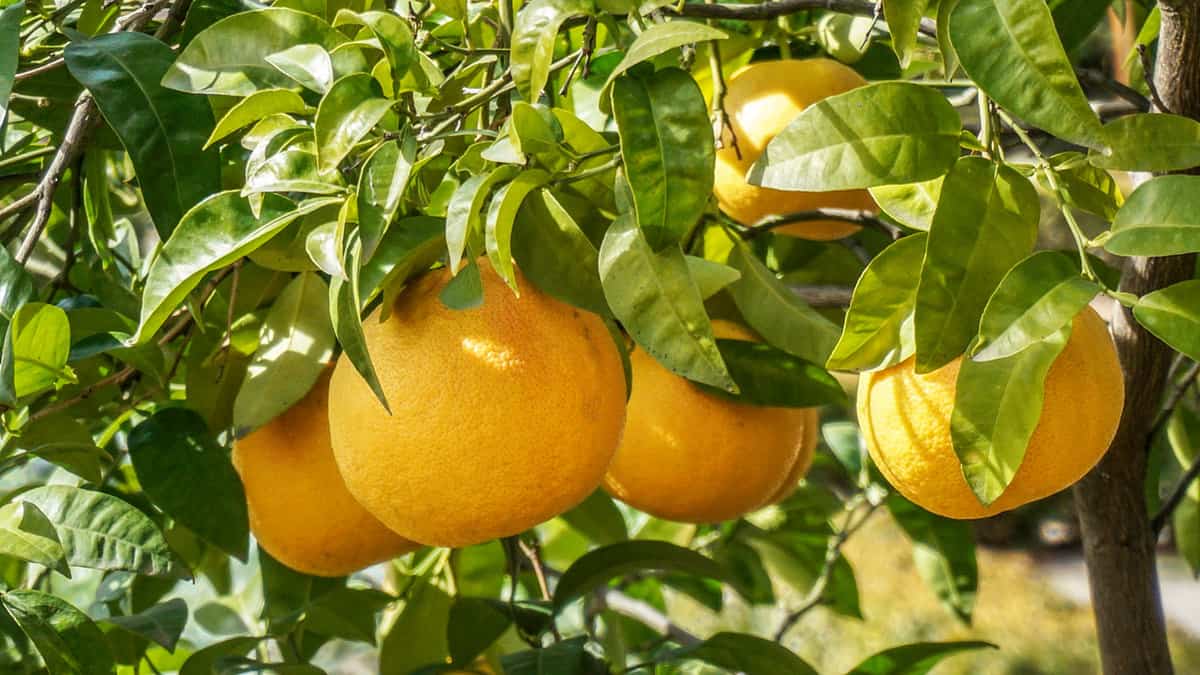
Another more cold-friendly citrus species for USDA zone six is grapefruit. Considering this citrus species can survive unprotected down to nearly 20 degrees Fahrenheit, this is yet another impressive option for your colder growing zone.
According to the University of Arizona, grapefruit trees survive temperatures as low as 20ºF without significant damage. That technically makes them "partially" cold-tolerant, so that's good to know.
However, if your grapefruit tree has fruit growing on it, the cold tolerance becomes closer to 25 degrees Fahrenheit for the actual fruit on your plant.
Generally, grapefruit will be okay in weather around 25-30 degrees, so your fruit should survive if the temperatures drop without much notice.
Like our Satsuma tree above, you should also cover grapefruit plants with a cover during colder periods.
SUN PRO Plant Covers With Freeze Protection
This plant cover protects plants from freezing temperatures, has a drawstring closure, measures 73x85 inches, works for trees and larger shrubs, fends off snow, hail, heavy rain, and pests, features lightweight breathable fabric, and comes in a few size options.
Follow this link to view it on Amazon.
3. Lemon
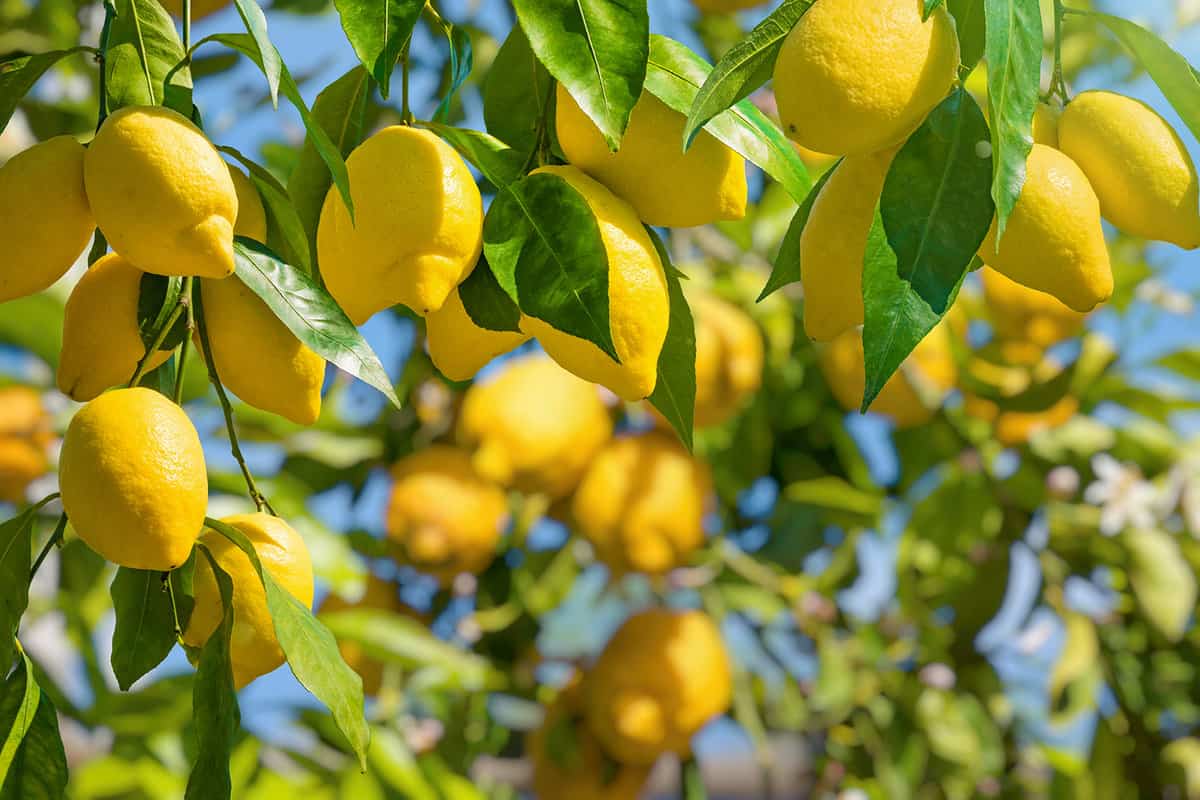
The lemon tree is the next citrus you can try growing in USDA zone six.
Although certain lemon varieties won't do well in prolonged periods of freezing weather if you protect them or move them inside until conditions improve: a lemon tree can work in zone six.
Specifically, experts claim the Meyer lemon tree is extremely cold tolerant, often withstanding temperatures down to 20 degrees without damage.
With that said, if you have a Meyer lemon tree in weather below 20 degrees for extended times, we recommend covering it or moving it indoors.
Most zone six gardeners choose to keep their lemon trees potted, allowing them to be easily moveable in the event of a sudden freeze. Again, it's always best to be safe than sorry.
Where Is The Best Place To Grow Lemon Trees?
We recommend staying in USDA zones nine or above for those wanting to grow lemon trees outside year-round. Although you can keep lemon trees alive during zone six winters, this can stress your plant.
Therefore, planting this citrus variety in tropical, warm regions will usually give you the best results. Many experts also mention how you can grow lemon trees in most places with warmer summers.
So, if you keep yours in a pot outside during better weather and then move it indoors during the harsh wintertime, your lemon tree should be okay.
4. Kumquat
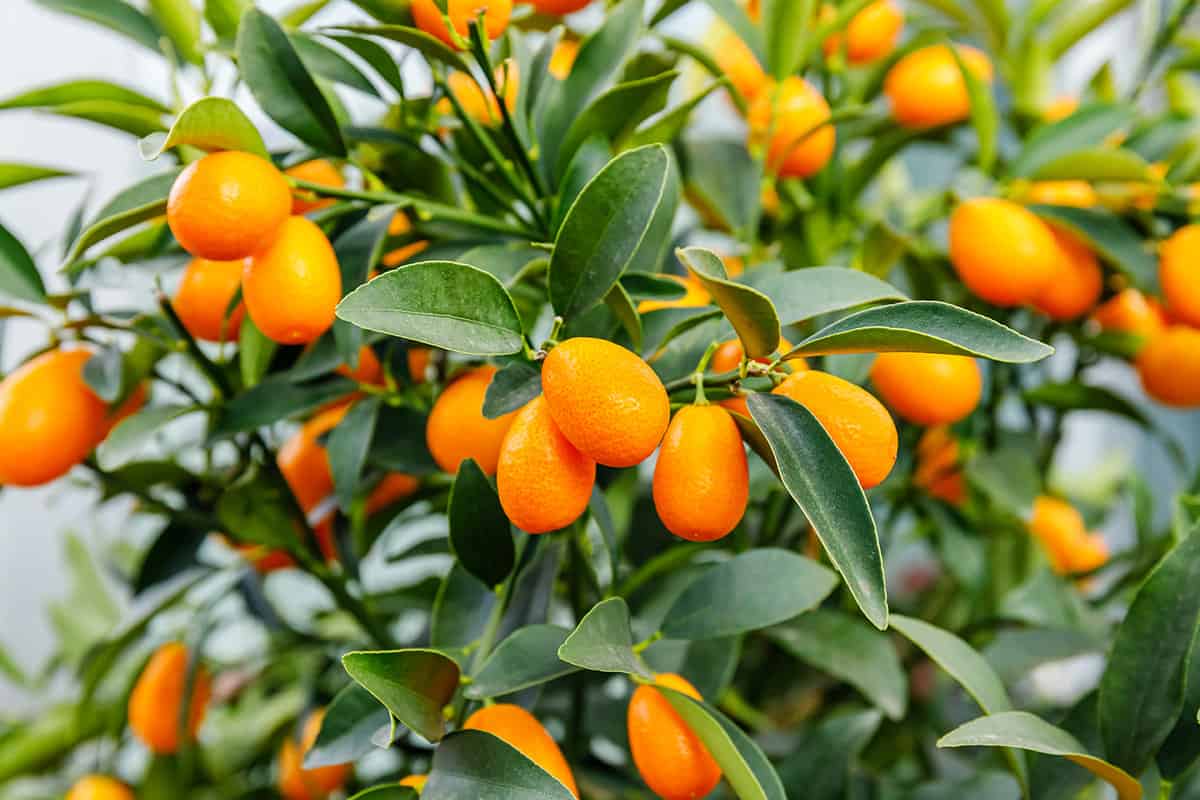
Our fourth idea for cold-tolerant citrus would be a kumquat tree. As mentioned earlier, zone six can be suitable for certain citrus plants, including the hardy kumquat species.
An interesting thing about kumquats is that they are about as cold-hardy as satsuma, which makes them better than some of these other plants for below-average climates.
Regarding their cold tolerance, kumquats can handle temperatures to nearly 25 degrees Fahrenheit unprotected and down to zero if you cover them with a thermal fabric.
Like lemon trees, you can also relocate a kumquat inside during freezing or below-freezing spells, as this can keep it protected until things improve.
5. Tangerine
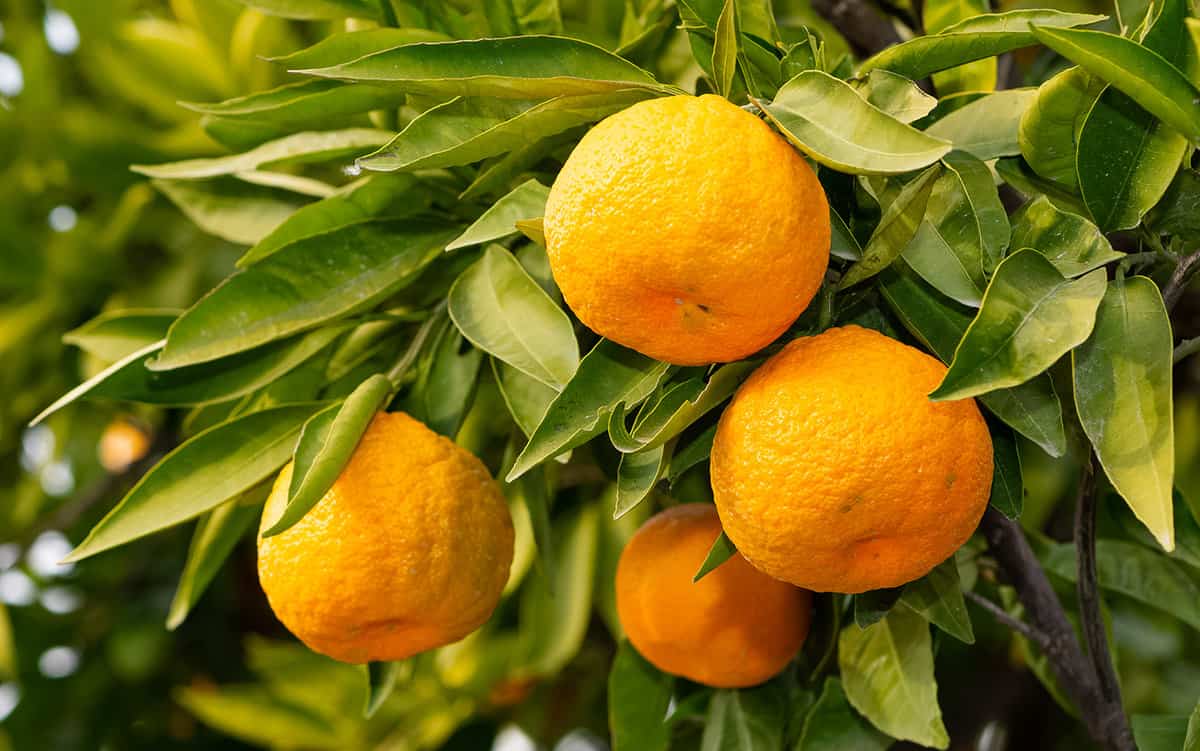
Another excellent option for citrus trees in zone six would be the tangerine variety. Generally, these delicious fruit-bearing trees can tolerate weather down to the low 20s before sustaining wood damage.
However, their fruit will freeze at around 32 degrees Fahrenheit, so if your plant has tangerines, we recommend grabbing any visible fruit before the weather worsens.
This citrus tree is one of the hardier options of the bunch, so if you want to keep it outdoors year-round, that should be fine with the proper protection.
As we mentioned, an easy way to save a citrus plant during freezing conditions is by wrapping it with freeze-proof thermal material. That also applies to tangerines, so we recommend grabbing a cover if the forecast calls for weather below 25ish degrees.
What Happens If A Citrus Tree Freezes?
If you forget to cover your citrus tree and it snows or freezes, the first thing to do is assess the damage. Since USDA zone six can get down to -10 degrees in certain areas, leaving a citrus plant unprotected can be deadly.
According to Texas A&M University, freeze-injured citrus generally needs good watering and fertilizer to pull through. Doing these things can help restore your tree's canopy and foliage if the two become severely damaged after a freeze.
From there, make sure to invest in a thermal plant cover that you can use to protect your citrus the next time the temperatures drop below 20-30 degrees, depending on the variety.
To Finish
Whether you have a citrus tree growing in zone six or want to plant one, it's essential to understand how cold-hardy your variety is. We found a few citrus options for zone six: satsuma, grapefruit, Meyer lemon, kumquat, and tangerine.
Of these trees, the satsuma and kumquat varieties will be the hardiest, being okay in weather down to nearly 20-25 degrees without protection. However, we recommend using a thermal cover for your citrus in cooler conditions regardless of its max tolerance.
16 Zone 6 Perennials That Are Full Sun And Drought Tolerant
Zone 6 Flowers To Plant In Fall [14 Suggestions To Beautify Your Landscaping]

